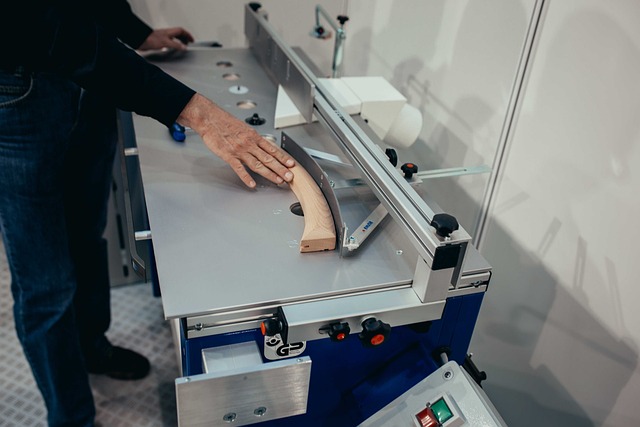Carpenters play a critical role in ensuring the durability and safety of wooden structures through their expertise in selecting appropriate timber, understanding wood properties, and applying both traditional and modern techniques. Their ability to assess wood species, grain patterns, and moisture content is essential for constructing stable frameworks that support entire buildings. Carpenters also excel in repair work, identifying issues like rot or structural shifts and implementing tailored solutions to extend the life and safety of wooden structures. Skilled carpenters use their manual dexterity and proficiency with a range of tools, from basic to advanced, to maintain and restore these structures, ensuring they remain functional and visually appealing over time. The choice of lumber by carpenters is key to the performance of the construction; for example, selecting spruce or Douglas fir for framing due to their strength and workability, and hardwoods like oak, walnut, or maple for detailed finishes. Carpenters must also consider environmental factors when choosing wood for exterior projects, opting for resistant varieties like cedar or teak. This careful selection and application of carpentry skills underpin the creation of robust, functional, and enduring wooden structures.
When it comes to constructing and repairing wooden structures, from the foundational frames to the final protective coats, the expertise of a skilled carpenter is paramount. This article delves into the intricate processes that form the backbone of robust and enduring wooden constructions. From selecting superior timber and employing precise cutting techniques to mastering joinery and ensuring weatherproof defenses, each step is pivotal in creating structures that stand the test of time. Carpenters play a critical role in these endeavors, utilizing modern tools and eco-friendly practices to craft spaces that are not only aesthetically pleasing but also energy efficient and sustainable. We will explore advanced framing methods, the importance of proper insulation and ventilation, and the art of wood paneling, all while offering guidance on maintenance and repair to extend the lifespan of these wooden marvels. Whether you’re a homeowner seeking knowledge or a professional carpenter aiming to refine your craft, this comprehensive guide will provide valuable insights into the world of carpentry.
- Understanding Wooden Structure Framework: The Role of a Skilled Carpenter
- Selecting the Right Timber: A Carpenter's Guide to Quality Materials
Understanding Wooden Structure Framework: The Role of a Skilled Carpenter

When it comes to constructing and repairing wooden structures, from framing to finishing, the expertise of a skilled carpenter is indispensable. These professionals are the architects of wooden frameworks, meticulously crafting the bones of a structure with precision and care. Their role begins at the foundational level, where they assess the site, understand the load-bearing requirements, and select appropriate timber species for the job. The carpenter’s knowledge extends to choosing the right lumber, understanding its grain, moisture content, and strength, which are all critical factors in ensuring the structural integrity of the project. They cut, join, and assemble these pieces with a blend of traditional techniques and modern technology, forming the skeletal framework upon which the entire structure will depend.
In the realm of repairs, skilled carpenters demonstrate their versatility and problem-solving prowess. Whether it’s addressing rot, reinforcing joints, or aligning structures that have shifted over time, they employ a variety of repair methods tailored to the specific needs of each wooden element. Their ability to diagnose issues with both eyes and hands, and their skill in using tools ranging from hammers and saws to power equipment, makes them vital for maintaining the longevity and safety of wooden structures. Through their craftsmanship, carpenters ensure that every beam, joist, and stud is not just a component but a part of a cohesive whole, ready to withstand the test of time.
Selecting the Right Timber: A Carpenter's Guide to Quality Materials

When embarking on the craft of constructing or repairing wooden structures, from framing to finishing, a carpenter’s foremost task is to select high-quality timber. This choice directly influences the durability, structural integrity, and visual appeal of the final product. A seasoned carpenter recognizes that not all wood is created equal; each species, cut, and grade possesses unique properties that make it suitable for different aspects of a project. For framing, woods like spruce or Douglas fir are often preferred due to their strength and workability. In contrast, for finer details and exposed elements where appearance plays a crucial role, hardwoods such as oak, walnut, or maple are the preferred choice. Understanding the grain patterns, moisture content, and natural resilience of the timber is essential for ensuring that the wooden structures stand the test of time. Carpenters must also consider the end-use application when selecting their lumber. Exterior projects require wood with higher resistance to rot and pests, such as cedar or teak, whereas interior applications might allow for a wider selection based on aesthetic preferences and budget constraints. By meticulously evaluating each piece of timber, a carpenter ensures the foundation of their work is solid, leading to structures that are not only functional but also enduring.
In conclusion, mastery in constructing and repairing wooden structures from framing to finishing is a testament to a carpenter’s expertise. A carpenter’s proficiency begins with a thorough understanding of the wooden structure’s framework and extends to the meticulous selection of quality timber—each plank and beam serving as a cornerstone of durability and aesthetics. By adhering to these principles, a carpenter ensures that each project, whether new construction or restoration, stands as a lasting piece of craftsmanship. The skills honed in this specialized field are essential for maintaining the integrity of wooden buildings, ensuring they continue to serve their purpose with resilience and grace.
